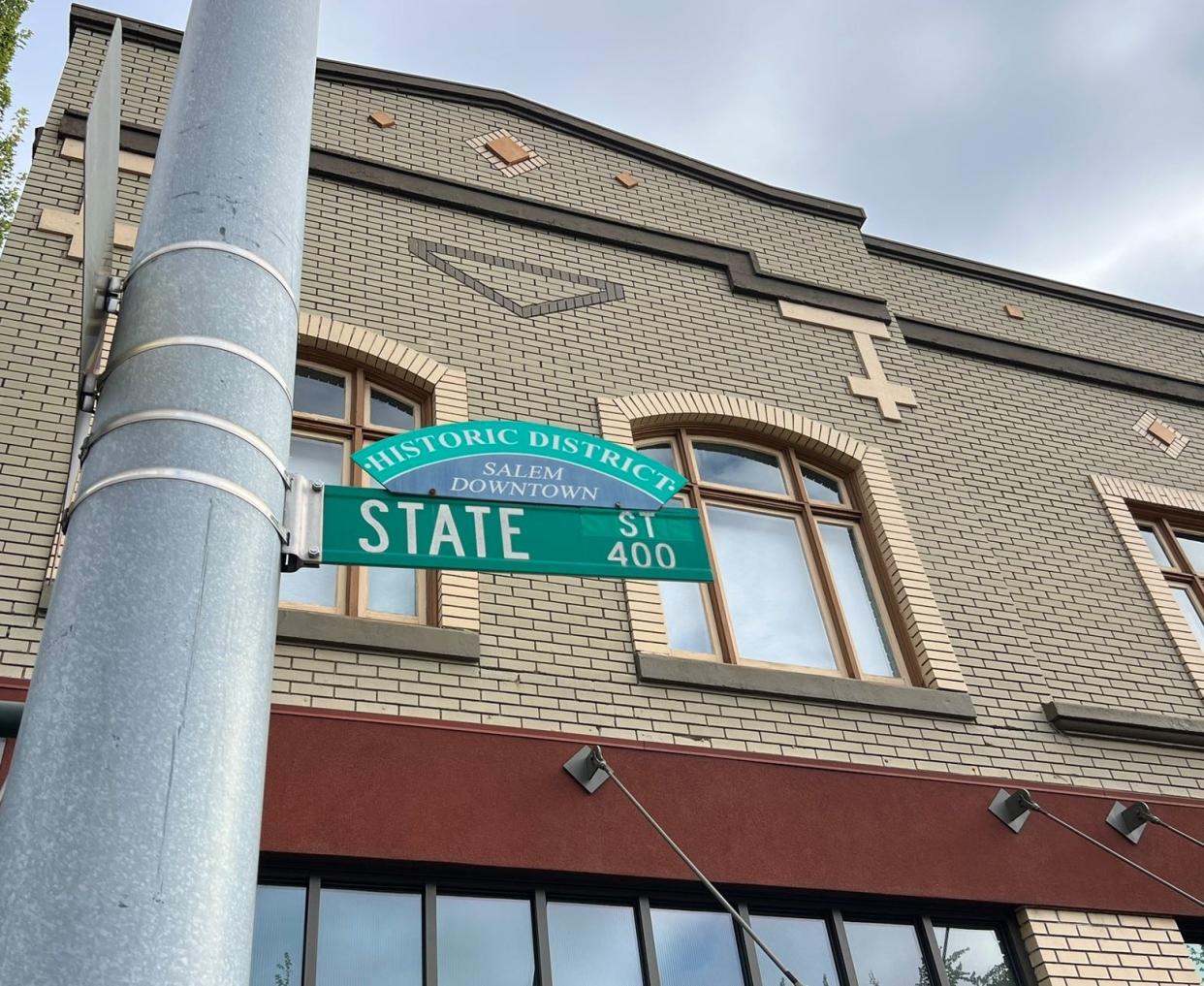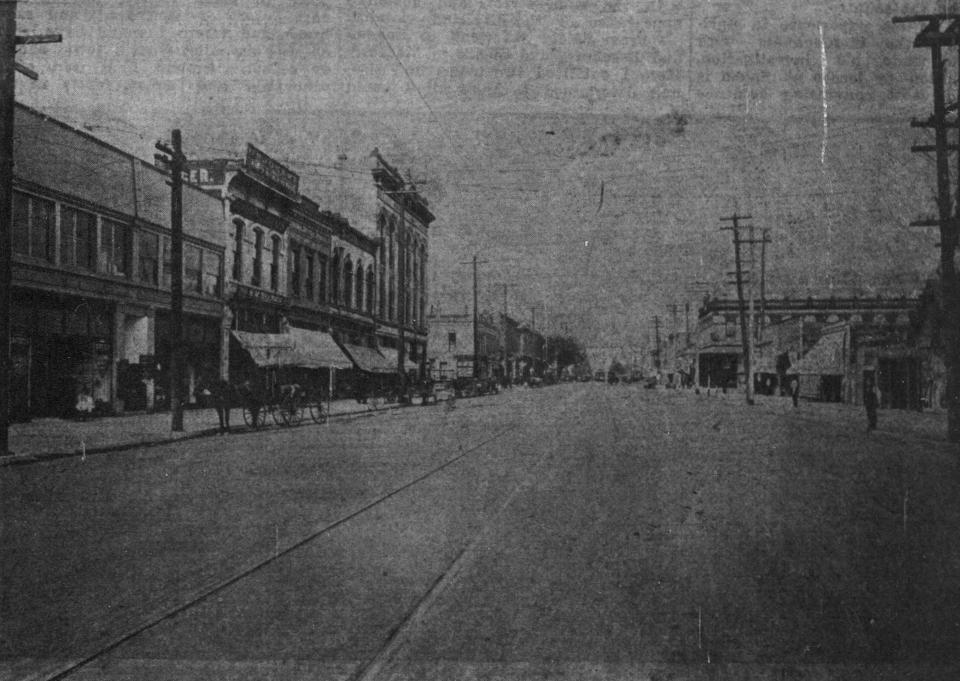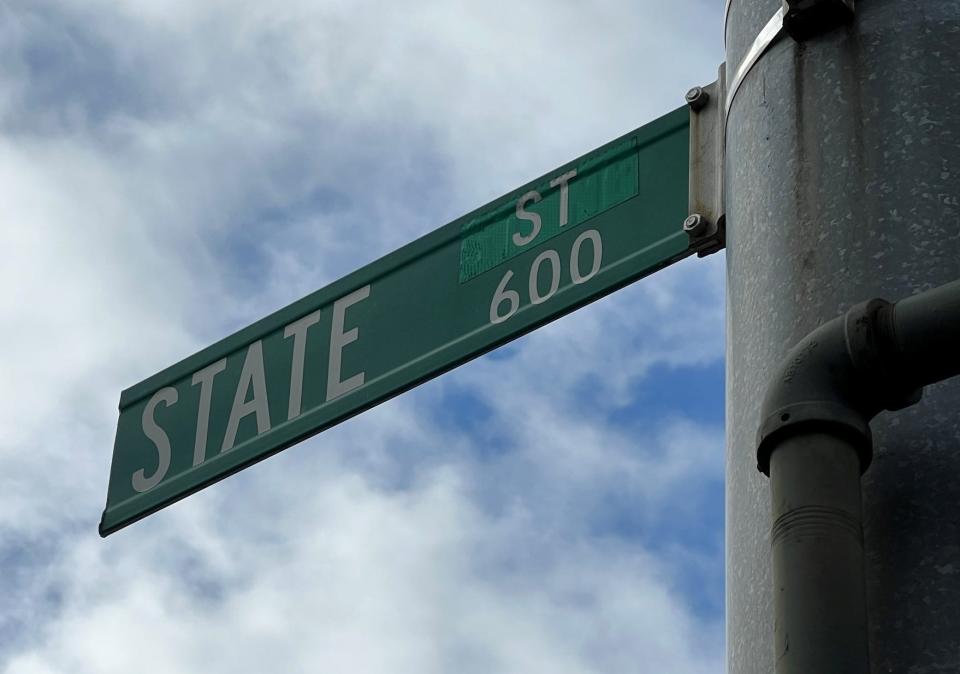State Street in Salem doesn’t have a directional suffix. Why is that?

This is part of a weekly series answering "Why is that?" questions about Salem and the Mid-Valley.
The question: Why doesn't State Street have a NE or SE suffix like every other street, avenue, drive, place, way or lane east of the Willamette River in Salem? We have the answer. But first, a little history.
The background: State Street has been around since long before Salem was incorporated in 1857.
The city was founded in 1842 and platted four years later. It would take another four years for the plat to be recorded. By then, the 1850 census counted 505 households in the city, and the center of commerce was firmly established at the intersection of Commercial and State streets.
The two major cross streets formed the linear nexus of the seven-block historic district we know today.
Surrounding street names such as Court, Ferry and Trade seemed to convey the Methodist settlers' vision of an orderly city commerce and government.
Perhaps one of the early leaders was from Illinois, wistful that Salem's State Street could emulate what Chicago had. Chicago's version dates back to the 1830s, when the Illinois legislature established a route known as State Road. The name was retained when a street was planned, and it became a retail gateway. Unlike Salem's version, it has directional suffixes.
The first mention of our State Street in the Statesman Journal archives is on April 21, 1857, when the Weekly Oregon Statesman reported a city ordinance requiring the building of plank sidewalks.
Ordinance No. 8 authorized Salem to survey the city's central area, including State Street between Commercial and Capitol streets, and establish a uniform grade for plank sidewalks. A directional suffice was not used.
Actually, directional suffixes were not used in print with any street addresses at that time.
State Street was the main thoroughfare running east-west along which many businesses emerged. It grew with the development of horse-drawn and electric streetcar systems when it was just a dirt, then gravel road.
Our archives indicate a three-block stretch of Court Street NE was the first street paved in Salem, and State Street was the second.

The city had eight blocks of State paved in 1908, from Commercial to 12th streets, and did not skimp on materials for the two-month-long project.
A construction company advertisement in the Capital Journal described it as the "finest pavement in the world, 10 inches of crushed basalt and bitumen on gravel foundation. Bitulithic pavement selected by the capital city for its finest business and residence streets."
Once completed, the newspaper touted State Street as one of the prettiest in the Northwest and claimed Salem had "paving fever."
Commercial and High streets were next on the list, and other downtown streets soon followed.
Why do State Street addresses have no NE or SE?
State Street is the only street in Salem without a directional suffix because it is the dividing line between north and south. It is at the core of the city's grid.
That used to be one of the first style guide items drilled into new reporters at the Statesman Journal. Salem addresses north of State have N or NE following the number and street, while addresses south have S or SE.
State Street addresses have only the number and street.
At least they should, but that isn't always the case, even in this publication.
A half-dozen examples of a State Street address with NE or SE have made it into print the past five years, including a few coming directly from organizations like ours that should know the drill.
Newcomers to Salem get a temporary pass because many cities use a quadrant system with two-character directional abbreviations for all street names.

Oh, by the way
Apparently, even the city street sign makers get it wrong sometimes.
Next time you're downtown, look closely at the street sign blades on corner posts at intersections along State Street.
Above the block number, in the upper right-hand corner, is a narrow strip of matching green tape. At the right angle in the right light, you can make out NE covered by the tape.
Capi Lynn is a senior reporter for the Statesman Journal. Email your "Why is that" questions to her at clynn@statesmanjournal.com.
This article originally appeared on Salem Statesman Journal: State Street is only Salem street with no directional suffix

